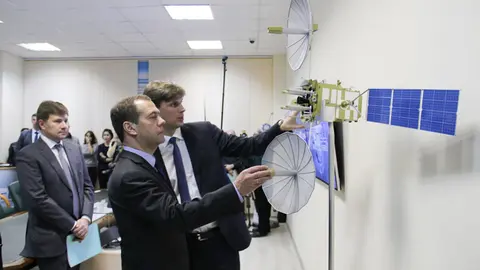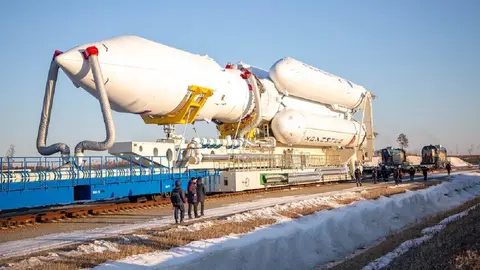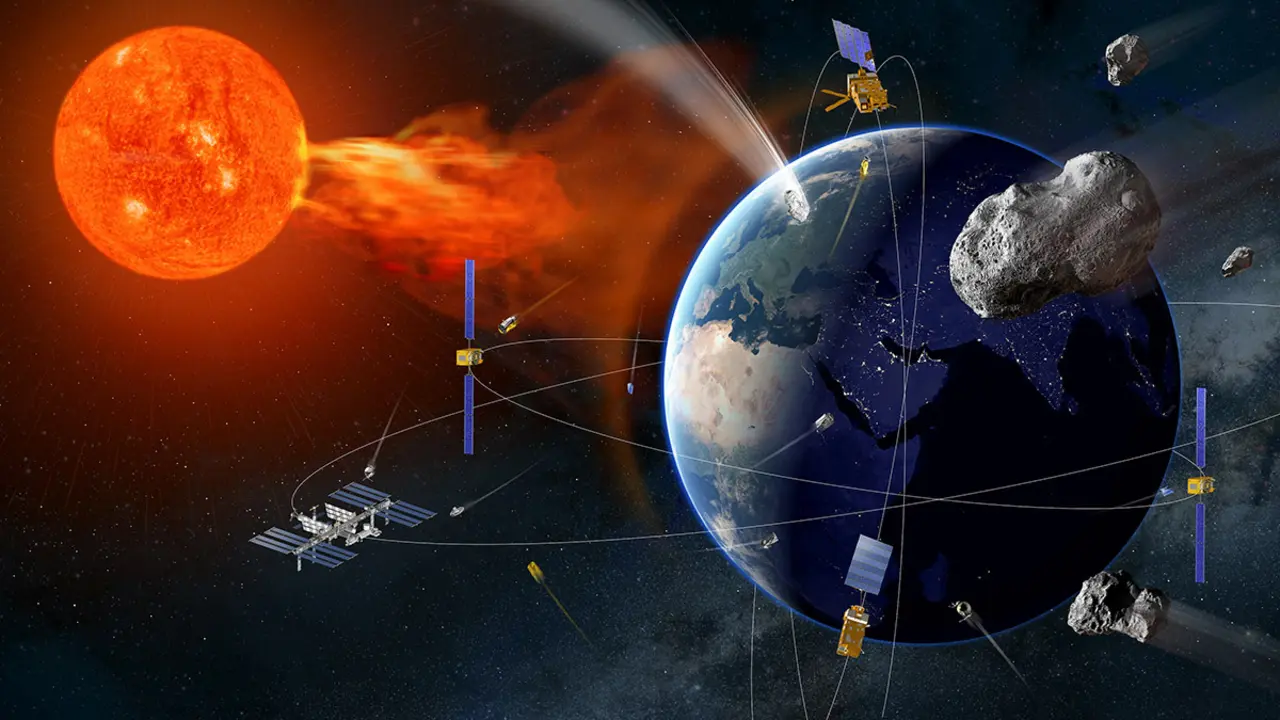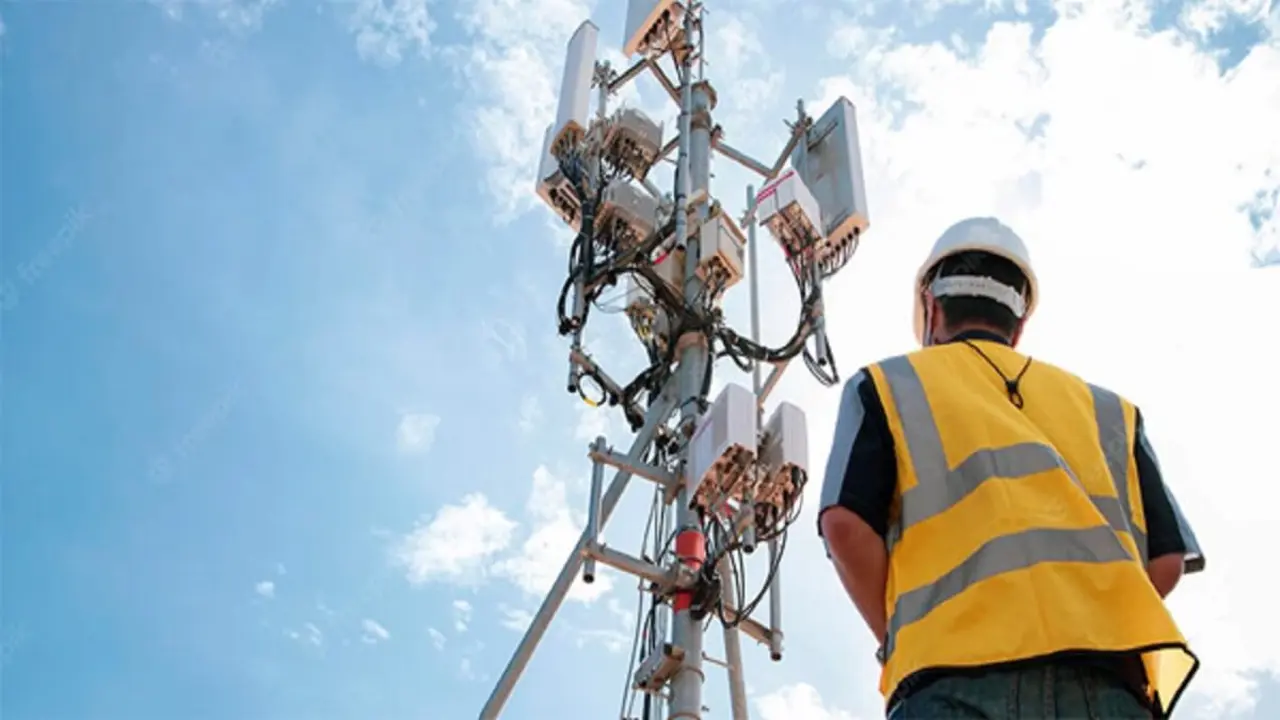Trump and Putin agree to end the International Space Station with Europe as a spectator

Presidents Trump and Putin have given the green light to the proposal put forward by the heads of their respective space agencies: to deorbit and drop the International Space Station onto Earth in 2030 and sink its remains in the deep waters of the middle of the Pacific Ocean.
The decision means that the largest space cooperation initiative of all time will come to an end in about five years. It marks the end of three decades of effective, uninterrupted collaboration between the US National Aeronautics and Space Administration (NASA) and its Russian counterpart, Roscosmos.
The project has the great merit of having overcome the clashes and serious tensions between Washington and Moscow, and even the sanctions and reprisals imposed by both sides in the wake of Russia's invasion of Ukraine in February 2022. This has been made possible by prioritising research on board the ISS and the survival of the joint crews of Russian cosmonauts and American and third-country astronauts, many of them European.

The agreement reached, for the time being verbal, between the heads of NASA and Roscosmos, after eight years without face-to-face meetings since October 2018, confirms that both agencies will continue to jointly and safely lead, govern and use the International Space Station (ISS) until 2030. The end of its operational life was scheduled for 2024, and although its infrastructure has been improved, some modules of the orbital complex are showing signs of fatigue.
The agreement between the newly appointed interim administrator of NASA, Republican politician and television presenter Sean Duffy, 53, who combines his new role with that of Secretary of Transportation, a position he took up in January 2025, is the main outcome of the visit to the United States at the end of July by a small delegation of senior Roscosmos officials, led by its director general for the past six months, Dimitri Bakanov, 39.

Disagreements on Earth, cooperation in orbit
The head of the Russian Space Agency was invited on a ‘working visit’ – as NASA described it – to witness the launch of the Dragon Crew-11 manned capsule on a Falcon 9 rocket from Elon Musk's SpaceX company at the Kennedy Space Centre in Florida. Four passengers were on board the Crew-11 mission that took off on 1 August and are now on board the ISS, one of whom is cosmonaut Igor Platonov, a lieutenant colonel in the Russian Air Force.
With the green light from the White House and the Kremlin, Duffy and Bakanov have agreed that the research, tests and experiments of the crews on board the ISS will continue ‘at least until 2028’, and that the Russians and Americans ‘will work together for about two years to define the profile for its deorbiting in 2030’, said the head of Russia's space activities.
For his part, Sean Duffy has stated that the United States and Russia ‘have disagreements and conflicts here, but we find points of collaboration on the ISS and we do not waste those relationships’.

Bakanov has been on US soil since 30 July for three days, along with three other senior Roscosmos officials. One of his companions was the director of Manned Programmes and, since last May, President Putin's special representative for International Space Cooperation, veteran cosmonaut Sergei Krikalev, 66, who has made six space flights, totalling 803 days in orbit and more than 41 hours of work in outer space.
During their short stay in the United States and before flying to Cape Canaveral to witness the launch of the Crew-11 mission, the small Russian delegation led by Bakanov visited the Johnson Space Centre, where astronauts and cosmonauts – currently including three Russians – scheduled to travel to the ISS are trained. They also visited NASA's Manned Mission Control Centre, both facilities located in Houston, Texas.

What is wanted after the ISS
Bakanov and his entourage took the opportunity to meet with the team of space technicians that Roscosmos has stationed at the Houston Control Centre, who maintain the official link with their Russian counterpart located near Moscow (TsOuP).
Both the Houston Flight Control Centre and the Moscow Flight Control Centre collaborate and share the supervision of the safety, habitability and working conditions of the crew on board the ISS. Positioned at an average altitude of about 400 kilometres, one centre is in charge of the American infrastructure and the other of the Russian infrastructure.
Looking beyond 2030, NASA is committed to supporting and advancing one or more commercial space station initiatives in low orbit, for which it has partnered with companies such as Axiom Space, Blue Origin and Voyager Technologies. The federal agency wants to transfer some of the research capabilities that will be lost with the disappearance of the ISS to the new private orbital complexes, particularly testing for pharmaceutical companies.

Everything points to the US agency also being a good customer for private space stations. NASA needs a place to have astronauts positioned in low Earth orbit, as its efforts are focused on returning to the Moon and then heading to Mars. On the Russian side, President Putin intends to have his own space station, ROS, whose construction should begin in late 2027 and be completed in 2033.
The ISS is the result of an intergovernmental agreement led by the United States. Signed on 29 January 1998 during the presidency of Bill Clinton, NASA's participation in the project in terms of infrastructure, resources and funding for its operation stands at around 76.6 per cent of the total costs, which means that the space agency now under Trump's control has absolute supremacy in terms of decision-making power over the orbital complex.

The second largest contributor is Russia, which provides around 12 per cent, mainly in infrastructure and space transport vehicles for the return of crews. The other three ISS partners have a minority stake in the project. One is the European Space Agency (ESA), in which ten nations, including Spain, share around 8.3 per cent of the contribution. The other two are the Japanese agency (JAXA), which contributes 2.8 per cent of the costs, and the Canadian agency (CSA), which contributes 0.3 per cent.












